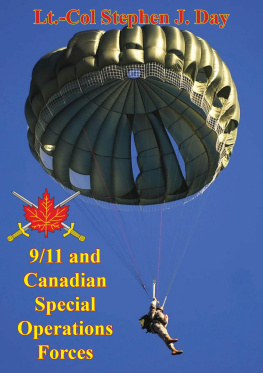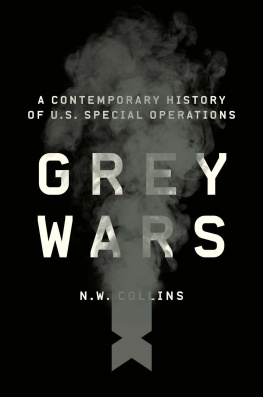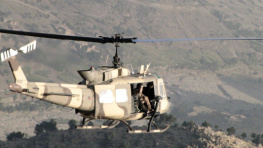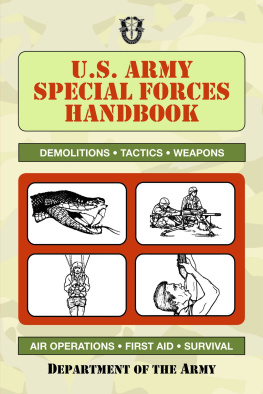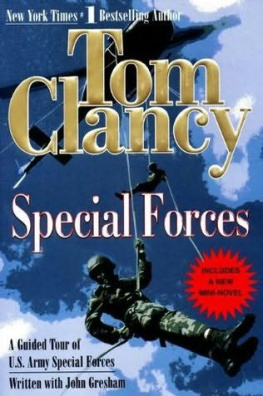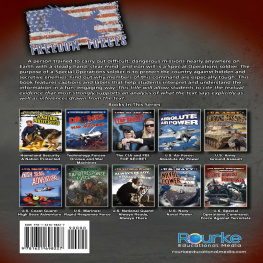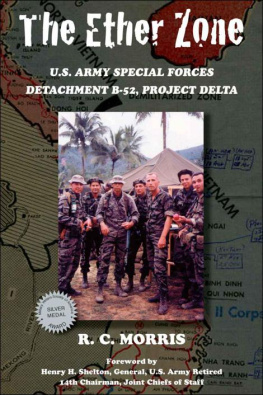

This edition is published by PICKLE PARTNERS PUBLISHINGwww.picklepartnerspublishing.com
To join our mailing list for new titles or for issues with our books picklepublishing@gmail.com
Or on Facebook
Text originally published in 2013 under the same title.
Pickle Partners Publishing 2013, all rights reserved. No part of this publication may be reproduced, stored in a retrieval system or transmitted by any means, electrical, mechanical or otherwise without the written permission of the copyright holder.
Publishers Note
Although in most cases we have retained the Authors original spelling and grammar to authentically reproduce the work of the Author and the original intent of such material, some additional notes and clarifications have been added for the modern readers benefit.
We have also made every effort to include all maps and illustrations of the original edition the limitations of formatting do not allow of including larger maps, we will upload as many of these maps as possible.
9/11 AND CANADIAN SPECIAL OPERATIONS FORCES: HOW 40 SELECTED MEN
INDELIBLY INFLUENCED THE FUTURE OF THE FORCE
A Monograph
by
Lieutenant Colonel Stephen J. Day
Canadian Army and Special Operations
TABLE OF CONTENTS
Contents
ABSTRACT
9/11 AND CANADIAN SPECIAL OPERATIONS FORCES: HOW 40 SELECTED MEN INDELIBLY INFLUENCED THE FUTURE OF THE FORCE, by Lieutenant Colonel Stephen J. Day.
In less than two decades, Canadian Special Operations Forces (CANSOF) grew from a 100-man hostage-rescue unit to a 2,500-person Command capable of prosecuting missions across the special operations spectrum. The seminal event causing this transformation is examined within this monograph.
The common narrative explaining the rise of Canadian Special Operations Forces Command (CANSOFCOM) states that 9/11 is the seminal event. Herein, a new narrative is proposed. One that posits the 2001-02 deployment of a 40-man CANSOF Task Force to Operation Enduring Freedom (OEF) is the seminal event. This Task Forces disproportionately positive impact on the Canadian national scene caused key national actors to take note of the strategic utility of special operations forces.
Twenty-four interviews with defence and security subject matter experts from the political, federal public service, military and academic domains, as well as two leading Canadian national journalists provide unique insights into CANSOFs ascendancy. Analyzing published defence policy since World War II and Canadas 20-year experience with her national counter-terrorism task force prove two key points. First, defence policy is extant, consistently expressing the requirement for an irregular capability for the conduct of operations in asymmetrical environments. Therefore, 9/11 did not change Government of Canada (GoC) expectations per se. Second, the one-year CANSOF OEF commitment produces a highly positive national strategic effect for the GoC. As a result, in less than a decade CANSOF transitions from a single, domestically focused, national counter-terrorism task force to where today CANSOFCOM is employed as a distinct element of national military power. This transformation from a single strategic resource to a strategically relevant, hard power option currently provides the GoC with greater strategic choice when she looks to deploy military forces alongside her allies.
ACKNOWLEDGMENTS
I am deeply indebted to the many serving and retired Government of Canada officials, Department of National Defence personnel, and public personalities for their time, candour, and patience as I conducted the interviewing, research and writing on Canadas contemporary special operations capability. Without their input and full support, this monograph in its present form and structure simply would not have been possible. Among the many Canadians who assisted me throughout I wish to specifically mention Colonel Bernd Horn, PhD of the Canadian Defence Academy for his insight and guidance as I attempted to produce a singular paper for multiple audiences. As a Canadian Army officer navigating the United States Armys education system it would have been significantly more difficult to produce this monograph without the support of the following American colleagues. My monograph director, Peter Schifferle, PhD, my research assistant Mr. Russell P. Rafferty, my editor and transcriptionist Mrs. Ann Chapman and my Advanced Operational Art Studies Fellowship colleagues. All of whom provided invaluable assistance, feedback and perspectives as I reworked the various drafts over the preceding months. Lastly, I thank my wife Nicola and our daughter Ella for their understanding and support as we continue to live the interesting and exciting life of a Canadian military family.
ACRONYMS
ADM (Pol)Assistant Deputy Minister-Policy (responsible for defence policy)
AUSCANUKUSAustralia, Canada, United Kingdom, United States (the four-eyes community or 4-Eyes)
C2Command and Control
C4ISRCommand, Control, Communications, Computers, Intelligence, Surveillance and Reconnaissance
CANSOFCanadian Special Operations Forces
CANSOFCOMCanadian Special Operations Forces Command
CDSChief of the Defence Staff
CAFCanadian Armed Forces (official name for Canadas Armed Services)
CFCanadian Forces (the colloquial name, in use since the 1970s)
CWOChief Warrant Officer
CJSOTFCombined Joint Special Operations Task Force
DCDSDeputy Chief of the Defence Staff (the former Second-ranking Officer)
DFAITDepartment of Foreign Affairs and International Trade
DMDeputy Minister (the Senior Public Servant in a federal department)
DNDDepartment of National Defence
GoCGovernment of Canada
HRHostage Rescue (task or mission-set)
HROHostage Rescue Operation
JTF 2Joint Task Force Two (Canadas national Counter-Terrorism Unit)
LColLieutenant Colonel
LGenLieutenant General
MGenMajor General
MNDMinister of National Defence
MWOMaster Warrant Officer
NSPNational Security Policy
OEFUS Operation ENDURING FREEDOM
Ops OOperations Officer
PSCPublic Safety Canada (equivalent to Department of Homeland Security)
PMPrime Minister
RCMPRoyal Canadian Mounted Police (Federal Police Force)
RCAFRoyal Canadian Air Force
RCNRoyal Canadian Navy
RetdRetired
SCONDVAStanding Committee on National Defence and Veterans Affairs (Parliamentary Committee)
SERTSpecial Emergency Response Team (former RCMP national Counter- Terrorism Unit)
SOFSpecial Operations Forces
TTPTactics, Techniques and Procedures
VAdmVice Admiral
PROLOGUE
Remember, when the time of crisis comes, 40 selected men can shake the world. Yasotayin Gray, Handfuls of Heroes on Desperate Ventures: When do Special Operations Succeed?
The silence was broken as the troop commander keyed his sabre radio. 29er this is 21, phase line green. 21 this is 29er. Acknowledge phase line green, WAIT 21, You have control, OUT! The captain and his warrant officer exchanged a confirmatory glance. 21 ack, All call-signs I have control stand-by stand-by GO! GO! GO! Simultaneous explosive breaches rocked the darkened target; relative superiority was achieved immediately through a combination of surprise and target saturation; a cacophony of diversionary devices and short, laser designated surgical bursts indicated the battle was joined. Assessments of risk to mission, men or self were made within milliseconds of encountering an unknown; life or death thus determined, the assaulters flowed through the target. 29, this is 21. Objective secure, SITREP to follow. The Capture-Kill mission was a success; the high-value target was taken alive.
Next page
